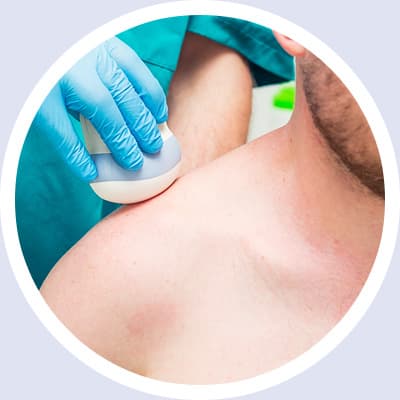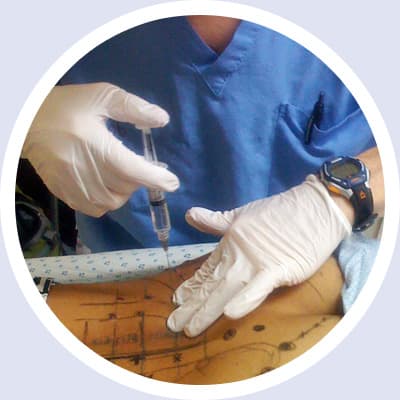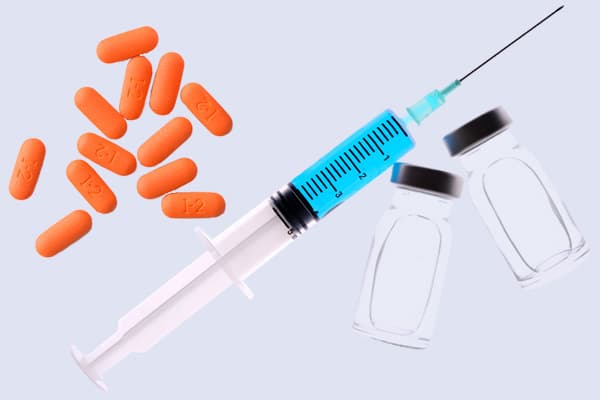Shoulder Pain
TREATMENT AND RELIEF
The shoulder is a complicated structure and consists of three bones that are held together by muscles and tendons called the rotator cuff. The tendons which attach muscle to bone can be stretched, weakened or torn leading to more weakness, shoulder pain and instability. Injuries can be from trauma such as falling on the shoulder or landing on an outstretched arm. Sports injuries from overuse are common in swimmers, golfers, tennis players, hockey players, football players and pitchers.
Regenerative therapies including: Prolotherapy, Platelet Rich Plasma Therapy, Ozone Therapy and Stem Cell Therapies are effective injured shoulder treatments to help the body’s own natural healing powers to heal and restore to health.
Common types of shoulder injuries include:
The shoulder is a complicated structure and consists of three bones that are held together by muscles and tendons called the rotator cuff. The tendons which attach muscle to bone can be stretched, weakened or torn leading to more weakness, shoulder pain and instability. Injuries can be from trauma such as falling on the shoulder or landing on an outstretched arm. Sports injuries from overuse are common in swimmers, golfers, tennis players, hockey players, football players and pitchers.
Regenerative therapies including: Prolotherapy, Platelet Rich Plasma Therapy, Ozone Therapy and Stem Cell Therapies are effective injured shoulder treatments to help the body’s own natural healing powers to heal and restore to health.
Common types of shoulder injuries include:
Osteoarthritis of the Shoulder
Labral Tears
Rotator-Cuff Injuries
Bicep Tendonitis
Impingement Syndrome
Frozen Shoulder
THE KRASNICK SOLUTION
How can Dr. Krasnick help you recover and restore naturally to health without drugs or surgery?

EXAM & DIAGNOSIS
Before a patient can be treated for shoulder pain, a correct diagnosis must be made.
Learn More
First, Dr. Krasnick will obtain a detailed history and perform a thorough physical examination. Frequently a musculoskeletal ultrasound will be done to understand where your shoulder pain is coming from. If you have any imaging studies such as X-rays, MRI or CT Scans, please bring the actual images to the appointment for Dr. Krasnick to review himself.

TREATMENT PROGRAM
Once a diagnosis is made, a comprehensive treatment program will be determined.
Learn More
This may include regenerative medical treatments such as: Prolotherapy, Platelet Rich Plasma (PRP), Stem Cell Therapy, Prolozone™, Neural Prolotherapy (Lyftogt Technique®) and Hydrodissection. None of these treatments contain any drugs, steroids, narcotics or NSAIDs, are performed in the office and do not require surgery. Dr. Krasnick performs injections under ultrasound guidance, so he is highly accurate in injecting the treatment to the exact location needed. These treatments allow the body’s own natural healing powers to recover and restore to health.

HEALTH & WELLNESS
To optimize treatment, we focus on the whole patient and not just the shoulder pain.
Learn More
This means Dr. Krasnick will investigate, discuss and make recommendations about your health and wellness. Important factors in order to optimize outcomes include cellular health. This entails optimizing your nutrition and diet to ensure you are getting the proper macro and micronutrients. Simple changes in diet and addition of vitamins and supplements can go a long way to improving outcomes. Dr. Krasnick will also focus on functional movement, which includes strength and flexibility. We know the body, especially, the musculoskeletal system acts as a whole and therefore pre- and post-treatment exercise or physical therapy will be recommended. Of course treatment and attention to the injured structure (joint or surrounding ligaments and tendons) will be discussed in detail, with specific post-procedure protocols when needed.
A procedure is not always needed and when possible trying to solve the problem with other noninvasive and holistic approaches will be sought.
None of the regenerative treatments contain any drugs, steroids, narcotics or NSAIDs, are performed in the office and do not require surgery. Dr. Krasnick performs injections under ultrasound guidance, so he is highly accurate in injecting the treatment to the exact location needed. These treatments allow the body’s own natural healing powers to recover and restore to health.
If you are looking for a non-surgical, drug-free, natural, alternative pain treatment for your shoulder pain, then contact us at (734) 585-5653 to schedule a consultation with Dr. Krasnick.
OVERVIEW OF SHOULDER PAIN CONDITIONS
Osteoarthritis of the Shoulder
More About This Condition
Osteoarthritis can occur in any joint but when it affects the shoulders it causes pain and reduced mobility. Pain can occur just from rolling over on your shoulder when you sleep and can limit your ability to carry things or even lift your arms. In athletes this is particularly problematic especially in sports involving throwing or swinging motion or moving any type of racquet or club.
Labral Tears
More About This Condition
Rotator-Cuff Injuries
More About This Condition
The Rotator Cuff is the muscles and tendons that surround the ball-and-socket joint of the shoulder. Its purpose is to provide stability and rotation of the shoulder but it is also the site of injury. Rotator-cuff injuries are quite common and can be caused by repetitive motion or acute trauma to the area. Symptoms include weakness in the shoulder and pain that can make simple activities such as combing your hair incredibly difficult. Patients often cannot even lift their arms above their heads due to the combination of pain and weakness.
Bicep Tendonitis
More About This Condition
Impingement Syndrome
More About This Condition
Frozen Shoulder
More About This Condition
Traditional treatments. Have you tried them and still have pain?
Non-Steroidal-Anti-Inflammatory-Drugs (NSAIDS) such as Ibuprofen, Advil and Motrin can temporarily relieve pain, but also reduce the cells that are needed to repair damaged tendons and ligaments and this can lead to more instability and pain! NSAIDS can also lead to bleeding in the stomach, ulcers and kidney damage. Narcotics are also used but can lead to side effects of constipation and drug dependency. For some patients, surgery is considered, but has greater risks such as infection or more pain.

